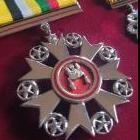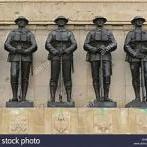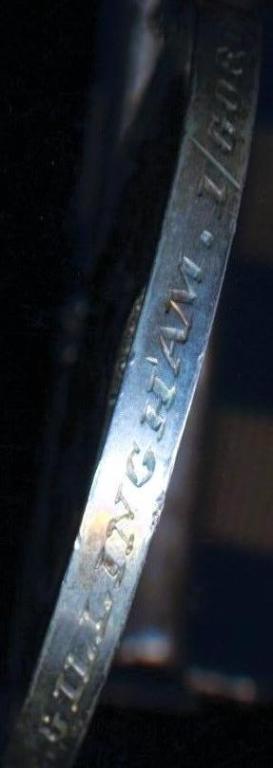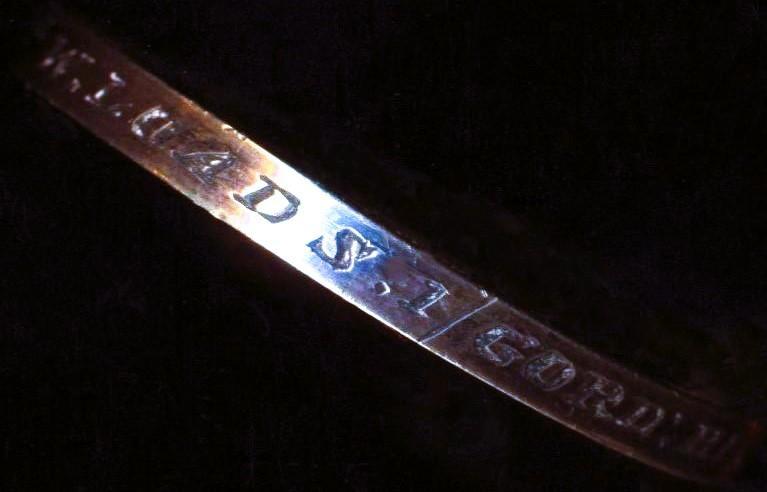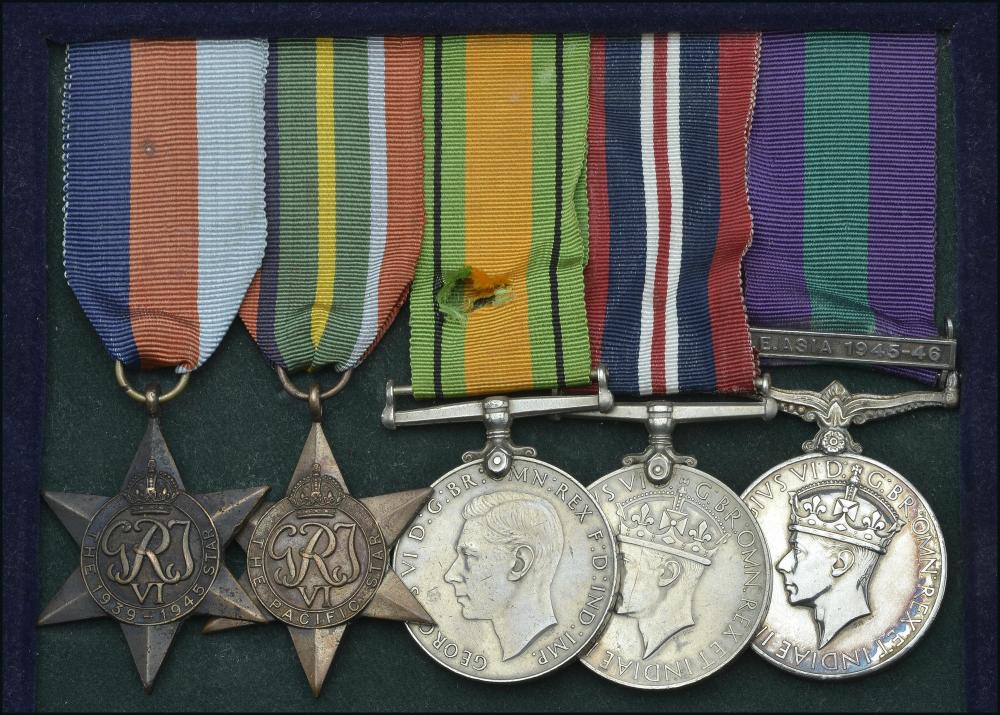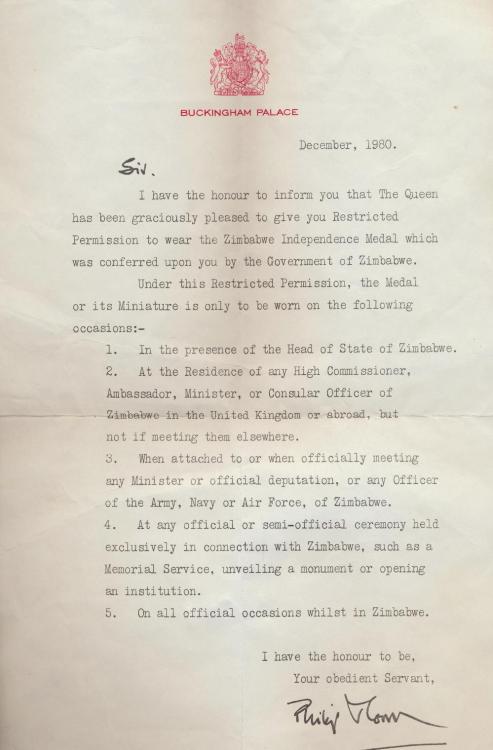-
Posts
67 -
Joined
-
Last visited
About Aberdeen Medals

Contact Methods
-
Website URL
http://aberdeenmedals.com/home.php
Profile Information
-
Gender
Male
-
Location
Aberdeen
-
Interests
Medals generally
Recent Profile Visitors
3,403 profile views
Aberdeen Medals's Achievements
-
There might well be someone who has such a combination - but was awarded an EIIR MSM.The mounter just using whatever 'reign' type they had in hand.... Miniature medal mounters, since way back, are occasionally known to substitute medals of different (wrong) reigns, and medal types. There was even a time when plain blank medal discs would be mounted as a temporary measure on the otherwise correct ribands, as the actual medal was not yet available from suppliers......
-
Neither of the campaign stars are official issue full-size medals. They are both unofficially commercially struck items What are the dimensions of the stars? I ask as the stars look 'small' to me, and may well be commercially struck miniature medals I note that you are resident in the Netherlands, and it may be that the medals are of continental manufacture to satisfy the demand from veterans of personnel from enemy occupied territories that flocked to Britain 1940-1945, and served in the British Armed Forces. Several Belgian and French medal makers struck and retailed Second World War campaign medals for sale to European veterans in the period circa 1947-1990........
-

QSA Medal role assistance
Aberdeen Medals replied to cazack's topic in Great Britain: Orders, Gallantry, Campaign Medals
The service papers you refer to are for the recipients 'Militia' service with 3rd (Militia) Battalion Gordon Highlanders, in which unit the soldier had the regimental number 2288 3(Militia) Bn Gordon Highlanders was not mobilized / deployed as a unit for overseas service during the South African War, however individual member sof the unit did serve overseas during that war, on attachment to one or other of the regular battalions of the Gordon Highlanders Sadly, the regimental clerks had multiple issues in correctly recording the medal and clasps entitlement for George Souter. He is recorded on 2 x separate pages in the regimental medal roll for 1st Battalion Gordon Highlanders (ref WO 100/203) as entitled to all 4 x clasps that you have listed, and on a supplementary (later date compiled) page in the same medal roll, is shown as additionally entitled to the 'South Africa 1901' clasp On the first of his entry pages in the medal roll, compiled and signed at Pretoria, 23 August 1901, he is shown as entitled to all 4 x clasps that you listed. In this roll he is shown as 2228 Pte J. SOUTER - note number typo and wrong forename initial - however significantly under remarks it clearly shows him as 'Time Expired 3rd Bn' (that's reference to his Militia origins). On the second entry page in the medal roll, compiled and dated, Glasgow, 17 March 1903, is shown his entitlement to the clasp South Africa 1901, with remark 'Discharge'. In this latter entry he is recorded as 2228 Pte J. SOUTAR. So there you go, three extant records and 3 x different spellings of his surname (which was almost certainly SOUTAR) - with only a single George SOUTER recorded a being born in Dundee, Scotland, in 1877, and another solitary single George SOUTAR born in 1878 (there were no recorded birth of a George Souter or Soutar in Dundee either in 1875 or 1876. Whether George Soutar was ever physically sent or received his loose dated clasp is not known - but a fairly typical example of one of the many thousands of British Army personnel, who were entitled to loose dated clasps 'after' their original medals and clasps earned before 1901 had been issued As information. Mark -

Eygpt medal
Aberdeen Medals replied to cazack's topic in Great Britain: Orders, Gallantry, Campaign Medals
The medal is an original medal, sometime lacquered Sadly the original naming has been erased and the medal renamed in a contemporary engraved style, and not in the style always associated with Egypt medals award to the Gordon Highlanders As reference / guidance see below appended images of some examples of typical naming on Egypt & Sudan Medals to the Gordon Highlanders As information. Mark -
Extant IGS 1895 medal rolls for some (many, all, most?) Indian Army units are held at the National Archives of India, in New Delhi, India. Some of these rolls (including rolls for both silver and bronze medal issues) have been digitized, and are accessible at the respective Indian national archives website. The rolls are mostly typescript for this period and are excellent sources of information, the rolls for followers having some particularly useful annotations / remarks. A search of the correspondence pertaining to medal in general, and specific claims, supplementary claims, and correspondence on replacements can be especially enlightening. The process of digitization of the medal rolls is not a priority at that archival repository, and while the quantity grows over time, there is still much to be done! The real downside and caveat however, is in the beast of a search engine on the website, which is extremely user unfriendly, and which does not lend itself to quick casual searches - you have been warned! You need to be extremely vigilant & imaginative with your search criteria - as said it is a beast of a search engine. If you have the curiosity, and time, lots & lots of time (to persevere), then spend an afternoon or evening browsing to see what you can find = you might just get lucky.
-
The medal riband bar looks right in every respect, with professional (or if you prefer very neat) hand stitching and is mounted in the correct order of wear, as illustrated. The normal practise for riband bars worn in the era 1920's-1970s, was for ribands to be mounted stitched down on strips of buckram, and the riband strips then stitched onto the tunic - riband bars with hinged pin fittings were also seen / encountered in that era, but far less commonly encountered the older the date. Clearly the recipient would have been entitled to other medals, which would have been mounted on second and or third rows, below the top row of ribands here illustrated. Uniform protocols for how to wear medal ribands vary over time, between services & between different Empire and Commonwealth countries. From memory, I believe the protocols for wearing ribands in India in the inter-war years, dictated that no more then 5 ribbons could be worn per row, and that if a top row (as in this picture) had 4 x ribands, then the second row would have five! As information.
-
Hi Owen, That's a fine haul of GSM's from Yemen - and including some very exotic units = well done. Question: Is the ensemble a Jewellers window dressing lot (i.e. medals just strung together for show), or do you think the medals actually did adorn a local's neck at some time? I am pretty certain that your Britisher amongst the lot, is one DAVID J GAY, born 29 March 1926, the son of Alfred & Sarah Gay, who was residing with his parents (and 3 other siblings) at 33 Parkside, Wallasey Chesire, England, in April 1939. I gleaned that from a search of the '1939 National Register for England & Wales', and which contains NIL other D J Gay's who could possibly meet the birth/age criteria for a post-war British Army Gunner enlistee (unless someone was born subsequent in 1940/41) who served during the Cyprus emergency. Alas there is no similar source for Scotland / Northern Ireland - but on a good hunch I am pretty certain that the aforegiven is your man. I have not checked the above D J Gay for anything else, but 'assuming' it is your man, you should be able to build a picture from above. Good luck with the collecting. Mark
-

The Atlantic Star.
Aberdeen Medals replied to Georg14's topic in Great Britain: Orders, Gallantry, Campaign Medals
Below attached is one of the fakers typical 'fantasy' groups that has appeared variously on the market over the years. The group has 5 x original medals all unofficially impressed in the same style as the 'Atlantic Star' shown in the opening post. It is named up to Regimental Quartermaster Serjeant R. F. Jackson, 1st Fiji Infantry Regiment, and comprises; - The 1939-45 Star; The Pacific Star; Defence and War Medals; General Service 1918-62, 1 clasp, S.E. Asia 1945-46 This group has twice been sold at DNW public Auction, firstly per Lot 1513 on 25 March 2014, wrongly catalogued as all medals 'Officially Impressed' , when it sold for GBP 440 hammer. The offending group then appeared again at DNW per Lot 660 on 12 May 2015, this time correctly described as all medals with 'Unofficially Impressed Naming', when it hammered by contrast for a much lower price of GBP 160. As information -

The Atlantic Star.
Aberdeen Medals replied to Georg14's topic in Great Britain: Orders, Gallantry, Campaign Medals
You do not say if you own the campaign star. The above notwithstanding, I would avoid this particular 'faked' medal like the plague. I can only see one C.E. McCormac who served as an officer with the RAF in WW2 - and his autobigraphical book 'You'll Die in Singapore' will likely clarify his entire Second World War services. The star itself may be an original medal - but subsequently named up. As another member has mentioned, the naming is private, but in this case the naming on this particualr medal has certainly not been done by the recipient! Some years ago, a faker / fantasist, with a particular interest in mostly WW2 'Pacifc War' theatre subjects was churning out 'privately' named medals that had been faked to show 'famous' well known medal recipients (as in the case of the medal you have posted - see Paul Brickhill's book titled 'Escape or Die' (numerous editions)), or to rare, and or 'Fantasy' units like Solomon Scouts - and even bizarre sightings of medals to 'Hong Kong Scouts' (?) The medals being 'faked', were actually original un-named medals - usually campaign stars - and the GSM 1918 GVI issue with clasps for 'S.E. Asia 1945-46'. The faker's medals still turn up in 2019 - as your example shows. If you are thinking to buy the medal offered, you might first want to ask the vendor for 'substantive' provenance. As information. -
To definitively reply to the original question(s) posted by the originator of this thread I would comment as under. All British personnel, whether Military or Civil (including Police) who were entitled to receive the Zimbabwe Independence Medal (all grades) for their service in Rhodesia in 1980, were allowed to accept the medal under 'Restricted Permission' conditions of award - see attached the accompanying letter from Buckingham Palace that stipulated in very clear terms under what conditions the Zimbabwe Independence Medal could be worn in British Military or Civil uniform. Regardless of whether the medal awarded was silver or bronze, the same 'Restricted Permission' to wear rules applied. The same rules also applied to wearing of the 'ribbon' only in uniform. As far as wear of the medal by uniformed services in the United Kingdom is concerned, it could / can only ever be worn 'officially' in 'uniform' when on official duty in connection with a state visit / or otherwise specified approved government duties where senior Zimbabwean government / diplomatic officials are present etc. As can be seen from the attached, the medal, and or the medal ribbon, could only effectively be worn in British Uniform, on specific. Considering the long history of poor relations bewtween the United Kingdom and Zimbabwe, there can seldom have been many 'official' opportunites for recipients in the United Kingdom to officially wear in uniform the Zimbabwe Independence Medal, it's miniature or ribbon. As information.
-
Hi Dietrich, Per my first message I would clarify for you; Your miniature DCM is scarcer as it has an OBVERSE design (Uncrowned, 'Coinage head GV, that was approved for use on coinage) the design shown on your miniature DCM was NEVER, EVER, officially approved or used on the official full-size DCM medals struck by the Royal Mint. British miniature medals are commercial private purchase items - for that reason variations & un-approved designs / spellings / fantasy clasps etc, will occasionally be found, as struck by the private maker. Your miniature DCM has a scarce, unapproved, and unofficial obverse design...... Your miniature medal variant will be of most interest to those miniature medal collectors who like to collect such variants in design. Good luck. Mark
-

Double MID Miniature Group
Aberdeen Medals replied to jeffskea's topic in Great Britain: Orders, Gallantry, Campaign Medals
Jeff I do not know how well inter-library loans may work in Canada, and or, whether the below book is available in some form of 'Download' on the internet, but you should try to obtain a copy of; - Mentioned in Despatches 1948-1968 (Mick Dalzell & Paul Riches, 1999) It is a compilation of all published MID's, extrapolated from the London Gazette. It covers all services, and all forces, Brtish & Commonwealth It's arranged as a nominal roll, by recipients surname in alphabatical order. The last 2 x columns of each entry contain the London Gazette date, and importantly for you, the theatre of award, i.e., Malaya, Near East, etc. Downside is that the book is strictly a nominal roll with recipients respective service details and award theatre - it has no abstract analysis by campaign theatre, year, service, nationality etc, so you would have to individually check each entry on each of the 139 x pages to find / eliminate likely candidates.......... Collector and resarcher A M Palmer had authored 'Above and Beyond: Being a Record of Awards to Her Majesty's Forces for Gallant and Distinguished Services During Military and Peacekeeping Operations Since 1945. Vol 1' (published in 1999). This work is more comprehensive and well arranged, including all types of awards, however the first volume only includes most (but not all) post 1969 campaigns, and as far as I am aware Volume 2, which was to include the pre 1969 campaigns was never published....... An issue of Haywards Medal Gazette, did contain an article with roll (inc casualties) for the Near East operations, but I can't be more specific than that, as I gave away my run of Haywards Gazette's wehn I last moved house several years back...... As information. Mark -
For those in the United Kingdom who might be considering obtaining a medal cabinet, I can readily recommend cabinet maker Stephen Phillips, of Chadwick End Cabinets; - http://www.chadwickendcabinets.co.uk/geological_cabinets.htm Some years back I purchased a bespoke 37 x tray sapele mahogany medal cabinet, and have never looked back. As information. Mark
-
Dietrich, I'm glad that your DCM is indeed a DCM, with correct inscription on reverse of the medal. However, you should be wary of the ambitious value shown in Medal Year Book against miniature GV DCM's. It would be a very happy vendor who could receive the values therein shown..... The type II variant they refer to is NOT what you have (yours is actually much scarcer - do not however assume the value doubles...), the type II in the MYB refers to the standard second type GV DCM obverse which was a 'Crowned head' medal Mark



